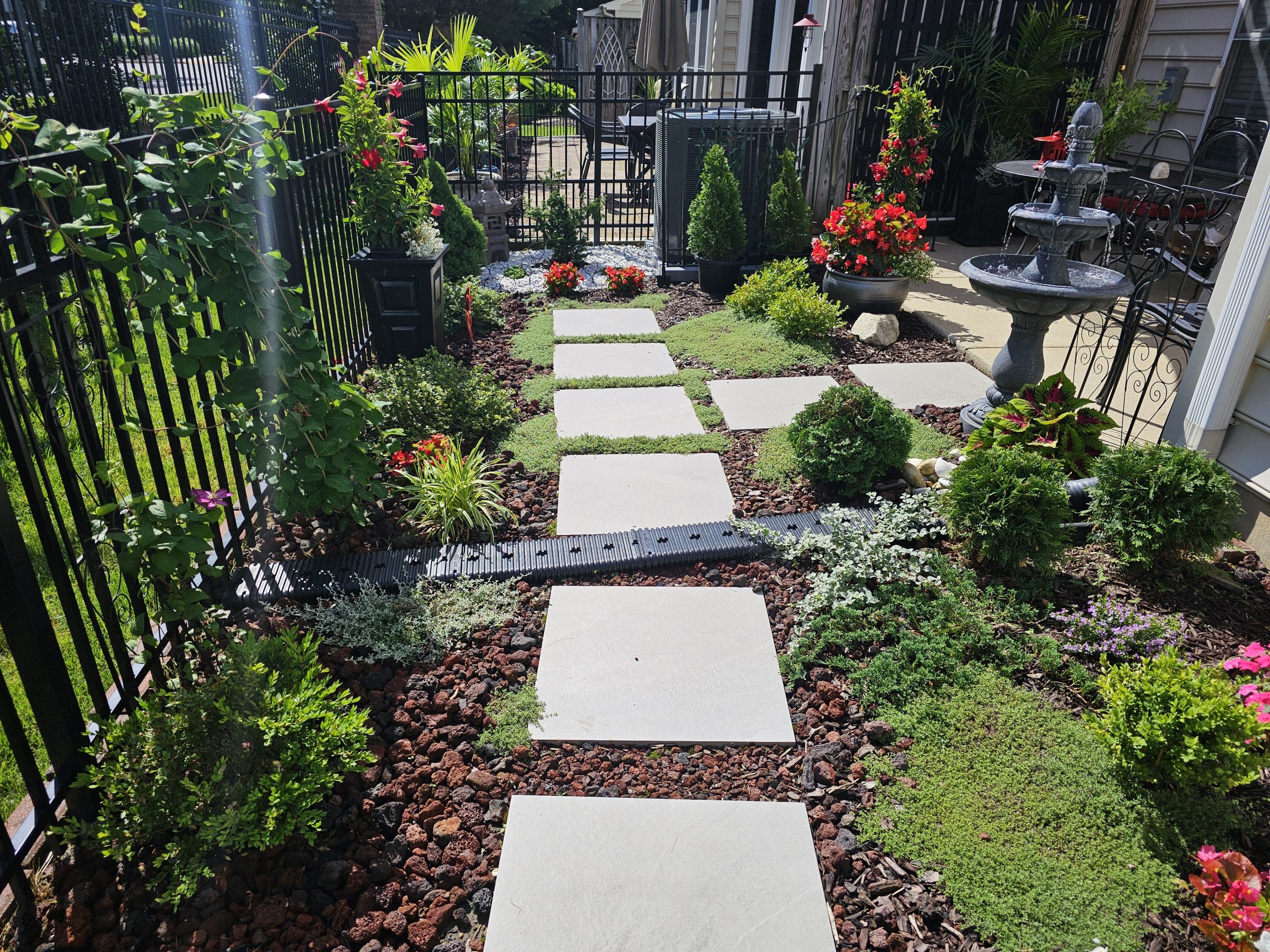Gardeners of SRCC: The Green-Thumb Chronicles
Take a stroll through the townhome communities of South River Colony, and you’ll quickly realize something: we’re not just residents— we can still grow things without a huge yard! Gardeners abound, armed with trowels, mulch, and an unshakable belief that this is the year the hydrangeas will finally behave.
In front of our townhouse stands a Lagerstroemia indica ‘Tuscarora’—a pink crepe myrtle that clearly thinks it owns the place, dropping flowers on cars, with roots taking up the entire square. Back in Virginia, we had two massive white ones that loomed over the driveway, sending seed pods into the house. So my first instinct was to stage a coup and chop it down. But alas, the Design Review Board (DRB)—of which I am a member—requires an application for such bold moves. So, in a rare moment of restraint I let the tree live. For now. Being neighborly was also a goal.
Instead, I turned my attention to the four flowering shrubs sulking in the corners. A little drastic pruning later, they were blooming again. I added bulbs and annuals, and like any good gardener, I watched some plants thrive and others… become compost. Gardening, after all, is nature’s version of trial and error—with more dirt and fewer do-overs. And I am still figuring out how to compost within HOA guidelines without buying that $400 electric compost device.
To get inspired, I wandered through The Pointe and other clusters, peeking at what my neighbors were growing (purely for research, not plant envy). I wanted to know what would thrive in our shared square and how to make my container garden look less like a plant orphanage and more like a curated jungle.
Then came the Greens. There, I spotted a bed of perennials so joyful it practically sang. Allium gigantum—my current bulb obsession—stood tall among a bed of various perennials. I knew a fellow garden geek had to live there. So, I did what any curious gardener would do: I knocked on the door.
Enter Alice Isaacman, who welcomed me in like an old friend. Her deck container garden was a joyful mix of herbs and flowers, and her woodland patio garden below? Glorious. I asked if she was an artist (because clearly, this was garden-as-art). She modestly said no, but after decades as a visual artist and educator myself, I knew better. Alice’s husband is the official artist, but her garden design? A masterpiece. Turns out, both Isaacmans worked for NASA. Something I shared with my aerospace engineer daughter, even though the fields are different, getting things into space is part of the mission, as is getting a certain someone into grad school.
Later, on my way to the HOA office, I passed a home in the Hamlets that looked like it had been landscaped with joy. I met Kathy Hodges, a retired federal budget analyst who turned Master Gardener. She passed the months of rigorous training and testing and shared her knowledge all over Anne Arundel County. When she and her husband Jerry moved in, the yard was more puddle than welcoming garden. But with DRB approval, Kathy’s hard work brought forth flower beds, pavers, and joy. Her corner lot now bursts with herbs, vines, and a plant I recognized from volunteering at the William Paca Garden: Lablab purpureus, aka Hyacinth Bean Vine. Naturally, I planted some too. May they thrive in her garden as in mine or some positive garden mantra.
Gardening brings curb appeal, joy, and the occasional sunburn. Walk your neighborhood. Take notes. If your plants look tired, maybe they need a haircut (a.k.a. pruning). And remember: every season is a new experiment. Some plants will thrive. Others will ghost you. It’s all part of the fun.
And if you’re planning a big landscaping change? Talk to your neighbors and someone at a local nursery. Do your homework. And yes—submit that DRB application. Perhaps you are planting something impossible to maintain and overtake the space, or that will never grow. Maybe it is a great plan that will provide curb appeal and bring joy to you and all who pass by. Research + experimentation = success *some results may vary.



 Facebook
Facebook
 X
X
 Pinterest
Pinterest
 Copy Link
Copy Link